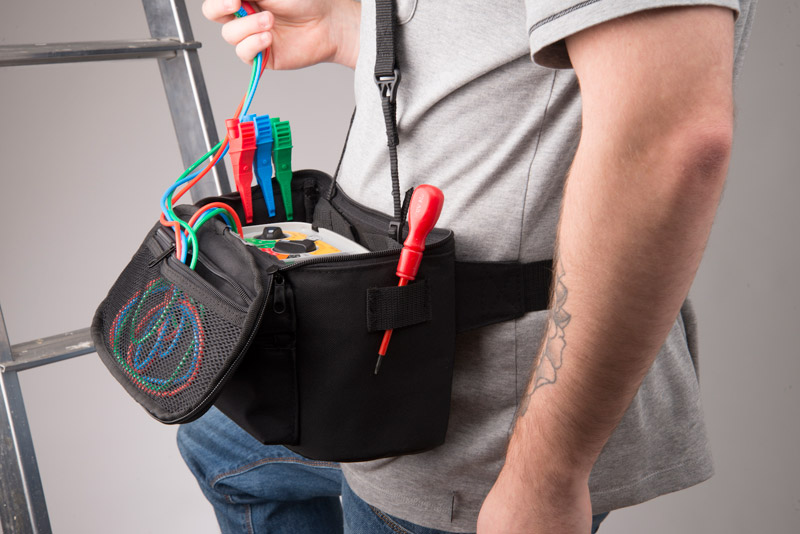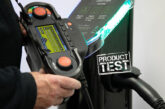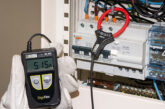
Many of the latest instruments for testing electrical installations offer a low voltage insulation test option, but when is it appropriate to use a low test voltage? Simon Wood, UK Wholesale & Distribution Sales Manager at Megger, explains.
Take a look at many of the latest insulation testers and multifunction installation testers (MFTs) and you’ll see that they offer a choice of DC insulation test voltages. Almost all offer testing at 250V, 500V and 1,000V but increasingly an option for testing at 100V is also available.
To see where this might be useful, let’s start with a quick refresher on the choice of voltage for insulation tests on low voltage installations. Please note that the information given in this article is only an overview – before you start testing make sure you’re familiar with the full requirements and provisos detailed in the IET Wiring Regulations.
For most circuits with a nominal operating voltage of 500V or less, the insulation test voltage should be 500V. Before testing is carried out, the loads must be disconnected, along with surge protection devices and any electronic equipment that might be damaged by the test. If it’s not possible to disconnect these devices, it’s permissible to test at 250V.
When working on SELV and PELV systems, insulation resistance tests between the SELV and PELV circuits and other live circuits should be performed at 500V. However, tests between the SELV and PELV conductors themselves, as well as tests between PELV conductors and PELV protective conductors, should be performed at 250V.
For low-voltage circuits with a nominal operating voltage greater than 500V, an insulation test voltage of 1,000V should normally be used.
“Please note that the information given in this article is only an overview – before you start testing make sure you’re familiar with the full requirements and provisos detailed in the IET Wiring Regulations.”
Now for the 100V tests!
It will be clear from what has already been said that, unlike the tests at higher voltages, these are not prescribed by the IET Wiring Regulations. Nevertheless, there are many cases where 100V tests are very useful, not least to carry out a preliminary check on a circuit before performing a test at the higher voltage prescribed in the regulations.
Many contractors find such preliminary checks to be particularly useful when working on existing circuits where it’s difficult to be absolutely certain that all of the loads, surge protection devices etc. have been disconnected.
A 100V test is unlikely to cause damage to either the circuit or the connected devices and, if it gives an unexpectedly low value for insulation resistance, this is a clear indication that further investigations must be carried out before proceeding with tests at higher voltages.
A second case where 100V testing is needed is when working on equipment or cables rated to operate at between 24V and 50V. With the spread of electronic equipment in homes and businesses, this is becoming a common situation, and the use of test voltages higher than 100V in such instances carries a high risk of damage. Indeed, some manufacturers and suppliers explicitly state that the insulation resistance of their products must not be tested at voltages higher than 100V and these stipulations should always be observed.

A third instance where 100V insulation testing is invaluable is when work is being carried out on data cabling and telecommunications installations. In many cases these are likely to be damaged by testing at the “usual” voltages of 250V and above, whereas the lower voltage significantly reduces the risk of damage while still providing confirmation that the insulation is in good condition.
Nevertheless, before testing an installation of this type at 100V (especially if it’s impossible to disconnect all devices from the cabling) the manufacturer’s instructions should be consulted in case testing at an even lower voltage is recommended.
For those instances where even lower test voltages are specified, it’s worth knowing that insulation testers are now available that allow users to set any required test voltage from 10V to 1,000V in 1V steps. These instruments are also ideal for use where the equipment manufacturer stipulates that insulation testing must be carried out at a specific non-standard voltage.
Incorrect assumptions
So far, when talking about insulation test voltages, we’ve made an important assumption – that the test voltage selected by the user is the voltage that the instrument actually applies to the circuit under test. Unfortunately this isn’t always true.
In fact, the IET Wiring Regulations allow a variation of ± 20% on nominal insulation test voltages. This means that when you think you’re carrying out a test at 500V for example, the actual test voltage could be anywhere between 400V and 600V, and similarly for other test voltages. Often this doesn’t matter too much but sometimes, especially when testing delicate electronic equipment, it’s important to know the actual test voltage much more precisely.
Fortunately, many modern instruments make this possible. One technique, typically seen in the best MFTs, is to provide a secondary display that shows the measured test voltage at the same time as the insulation resistance is shown on the primary display.
Another approach, which has recently started to appear on the latest dedicated insulation testers, is not only to provide a secondary voltage display but also to incorporate circuitry that stabilises the test voltage so that it’s guaranteed to be within 2% of the nominal value under all normal operating conditions.
At first sight, it may seem that it’s unnecessary for instruments to offer a choice of insulation test voltages, especially when this choice includes 100V – an option that isn’t explicitly mentioned in the Wiring Regulations. However, as we’ve seen, having a choice of test voltages – and the means to ensure that the instrument accurately generates these voltages – are decided benefits in many applications. In fact, when it comes to insulation test voltages, low can often be the right way to go!








